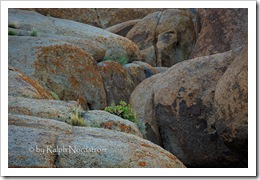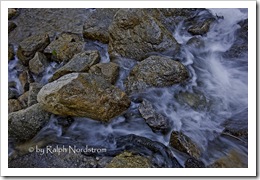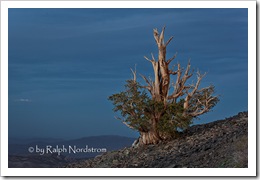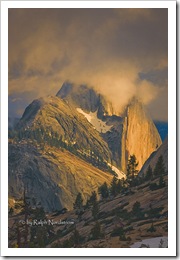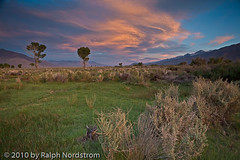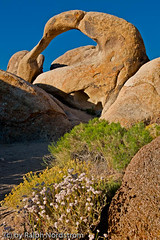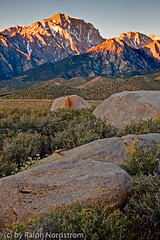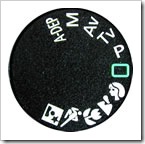I finally got a chance to work on a few more Eastern Sierra workshop photographs from June. It’s amazing how many things barge to the front of the line. But I finally got to these. I hope you enjoy them.
This one was taken before the workshop started. It’s just one more wonder to be found in the Alabama Hills. I get a very quite feeling from this one.
One of the exercises we did during the workshop was to photograph the chapter, paragraph and sentence on Lone Pine Creek at Whitney Portal. This was my sentence photograph. The water is swirling around the rocks going every which way. This image captures the whole turbulence of the cascade in this little microcosm.
I keep coming back to this bristlecone pine in the White Mountains. And each year the interpretation is different. It was somewhat overcast this year and as night was coming on the clouds created subtle patterns in the sky. One of the things I like about this tree is how it grows high above Great Basin. It’s been here for thousands of years. On this evening it softly glows as the day turns to night – one more time.
The Tioga Pass road opened just a few days before we arrived in Lee Vining. So there was no doubt that we would photograph sunset in Yosemite. Olmsted Point provides a unique view of Half Dome from the back side. As luck would have it a storm was rolling across the Sierra and we were there. I love the power in this photograph. When I look at the image I can’t help thinking how good it would look in a Southern California arts and crafts style house.
These will be up on my website soon but I wanted to give you a preview.
Join me on an upcoming workshop.
To see more of my photographs click here.
(680)

